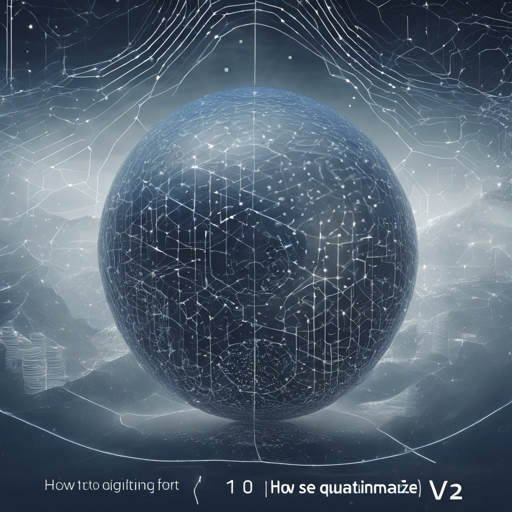Welcome to this comprehensive guide on quantizing and utilizing the Lumimaid-v0.2-123B model using Llamacpp with various quantization techniques. This model is effective for text generation tasks and can be optimized for performance depending on your hardware capabilities.
Understanding the Basics of Quantization
Think of quantization like resizing an image for different displays. Just as resizing compresses an image by reducing its pixel dimensions without significantly sacrificing quality, quantizing a model simplifies its numerical representation. This makes it less resource-intensive while maintaining acceptable performance levels. For instance, the Lumimaid model can be quantized to different levels like an image transformed into thumbnails, where each level (e.g., Q8_0, Q6_K) is akin to a different image size adapted for specific display needs.
How to Quantize the Model
To begin quantizing the Lumimaid model, follow these steps:
- Visit the Llamacpp GitHub repository to access relevant resources and documentation.
- The original model can be found at Hugging Face.
- Use the imatrix option with datasets sourced from this Gist to perform the quantization.
- Run your model in LM Studio for optimal environment setups.
Available Quantization Options
You have a menu of quantization options to choose from based on quality and file size:
| Filename | Quant type | File Size | Description |
|---|---|---|---|
| Lumimaid-v0.2-123B-Q8_0.gguf | Q8_0 | 130.28GB | Extremely high quality, generally unneeded but max available quant. |
| Lumimaid-v0.2-123B-Q6_K.gguf | Q6_K | 100.59GB | Very high quality, near perfect, recommended. |
| Lumimaid-v0.2-123B-Q5_K_M.gguf | Q5_K_M | 86.49GB | High quality, recommended. |
| Lumimaid-v0.2-123B-Q4_K_M.gguf | Q4_K_M | 73.22GB | Good quality, default size for must-use cases, recommended. |
| Lumimaid-v0.2-123B-IQ4_XS.gguf | IQ4_XS | 65.43GB | Decent quality, smaller than Q4_K_S with similar performance, recommended. |
Downloading Files Using huggingface-cli
To get started with the download using huggingface-cli, ensure it’s installed:
pip install -U huggingface_hub[cli]To download a specific file, execute:
huggingface-cli download bartowski/Lumimaid-v0.2-123B-GGUF --include Lumimaid-v0.2-123B-Q4_K_M.gguf --local-dir .If the model exceeds 50GB, it may be split into multiple files. In such a case, use:
huggingface-cli download bartowski/Lumimaid-v0.2-123B-GGUF --include Lumimaid-v0.2-123B-Q8_0.gguf* --local-dir Lumimaid-v0.2-123B-Q8_0This command helps you manage downloading all necessary parts of the model to a specified local directory.
Deciding Which File to Choose
Choosing the right quantization involves considering your RAM/VRAM. Aim for a quant a bit smaller than your available memory for optimal performance:
- For speed, choose a file size 1-2GB smaller than your GPU’s VRAM.
- For absolute quality, consider both system RAM and GPU VRAM, and select accordingly.
If unsure, opt for one of the K-quants (format QX_K_X) for a straightforward choice.
Troubleshooting
If you encounter issues during model quantization or deployment, here are some troubleshooting steps:
- Ensure that all necessary files are correctly located and not corrupted.
- Double-check your hardware specifications to confirm compatibility with the model size you wish to use.
- If performance lags, consider switching to a lower quantization level for better manageability.
For more insights, updates, or to collaborate on AI development projects, stay connected with fxis.ai.
Conclusion
At fxis.ai, we believe that such advancements are crucial for the future of AI, as they enable more comprehensive and effective solutions. Our team is continually exploring new methodologies to push the envelope in artificial intelligence, ensuring that our clients benefit from the latest technological innovations.

